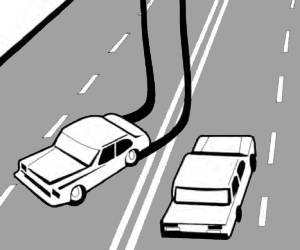Spotting a DUI
If you could do something to save a life, you would. Wouldn't you?
If you see someone on the road who is driving under the influence, you can help get that person off the road and possibly save their life – and the lives of others. You can do this by dialing 911.
Yes, 911. "But isn't 911 just for emergencies?" you might ask. "The Connecticut State Police encourages the public to call 911 to report motorists suspected of being impaired" said Sergeant Frank Sawicki of the Connecticut State Police Traffic Services Unit. Sergeant Sawicki adds, "Getting an intoxicated driver off the road by calling 911 goes a long way to prevent a tragedy."
If you think you spot a drunk driver, do not attempt to stop the vehicle. Follow from a safe distance; take down the license plate number and description of the vehicle, the direction in which it is traveling and report to area law enforcement.
How can you tell if a motorist is driving under the influence? While you can't be 100% certain, there are a number of cues that often indicate that a driver is impaired. Studies conducted by the National Highway Traffic Safety Administration which involved hundreds of police officers and more than 12,000 enforcement stops came up with a list of 24 cues have been found to predict blood alcohol concentrations (BAC) of 0.08 percent or greater. The cues predict that a driver is DWI at least 35 percent of the time. Observing any two cues indicates a probability of DWI at least half the time. Some cues, such as swerving, accelerating for no reason, and driving on other than the designated roadway, have indicate a DWI more than 70 percent of the time. Here is a partial list of these cues:

- Weaving within a lane or weaving across lane lines
- Straddling a lane line
- Almost striking a vehicle or other object
- Stopping problems (too far, too short, or too jerky)
- Accelerating or decelerating for no apparent reason
- Varying speed
- Driving in opposing lanes or wrong way on one-way
- Stopping in lane for no apparent reason
- Driving without headlights at night
- Following too closely
- Illegal or improper turn (too fast, jerky, sharp, etc.)
- Stopping inappropriately
If you notice a driver showing two or more of these cues, chances are that they are driving while impaired.
DO EVERYONE A FAVOR AND LET THE FOLKS AT 911 KNOW WHAT YOU SAW.
Of course, not letting an impaired driver behind the wheel in the first place is an even better solution than calling 911. If someone you are with has been drinking and is about to drive their car, offer to give them a lift or call them a taxi.